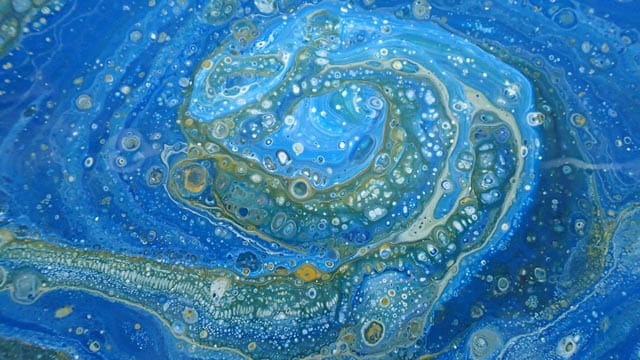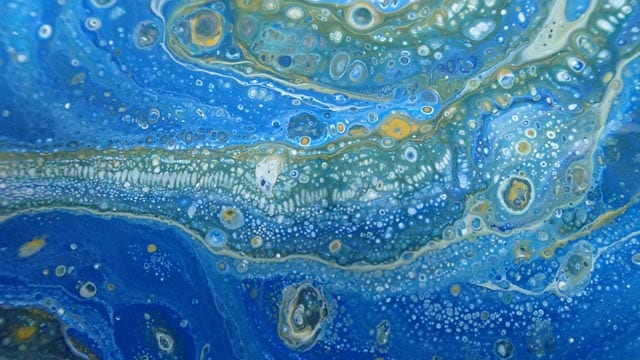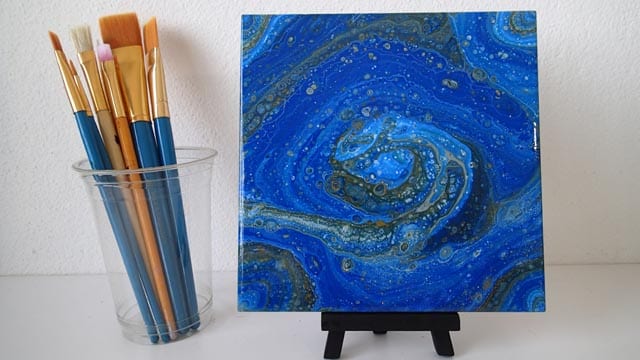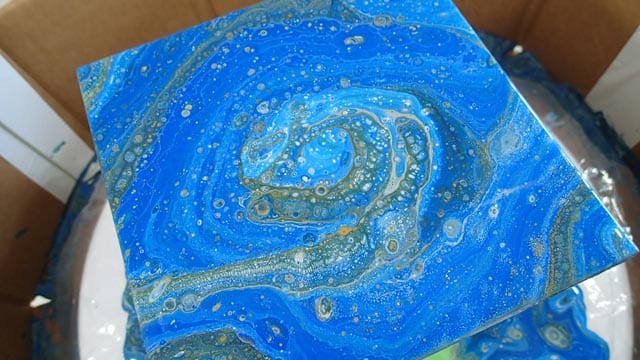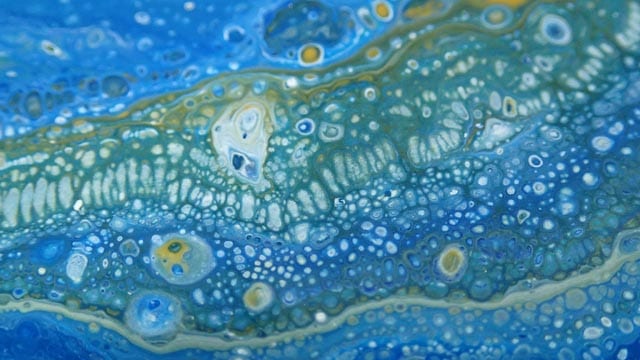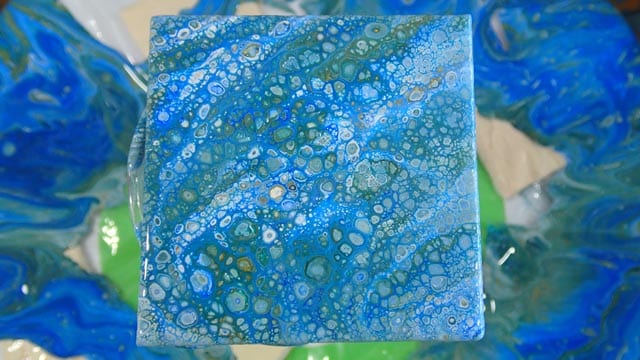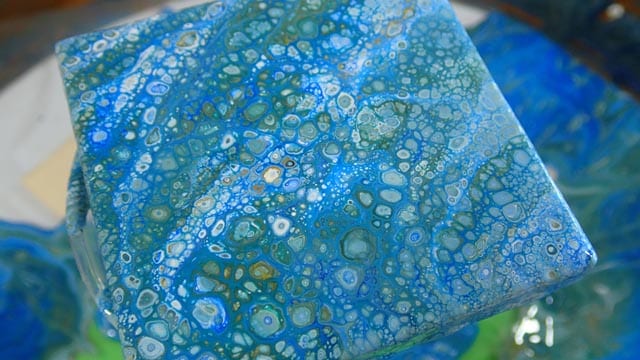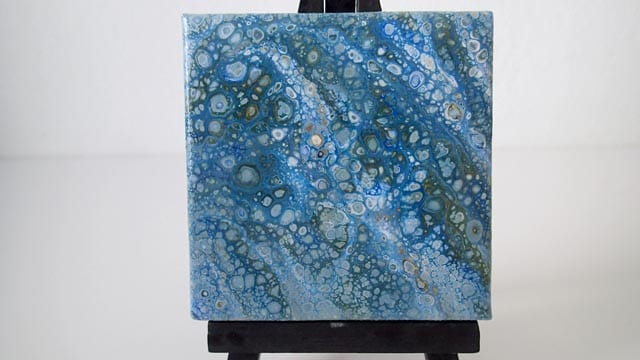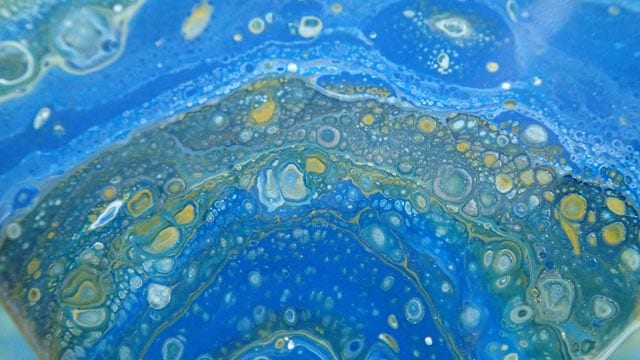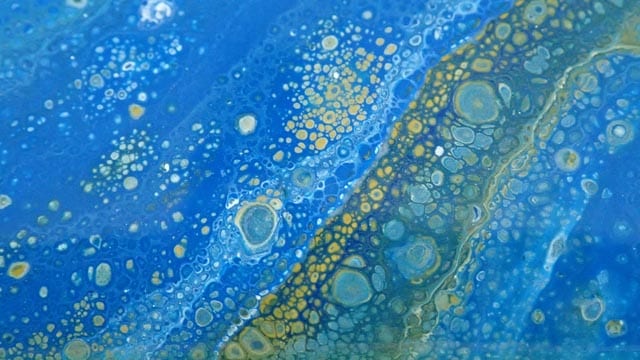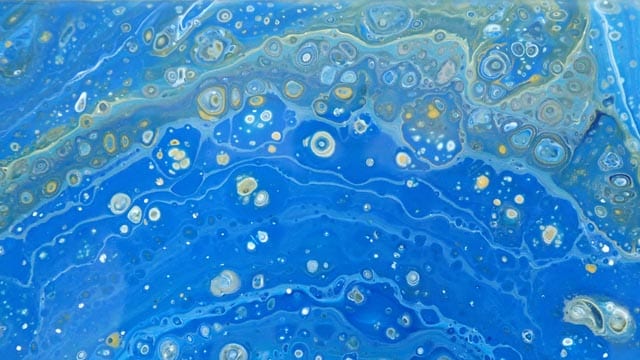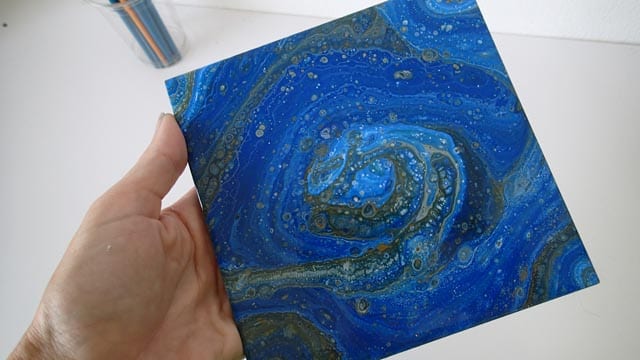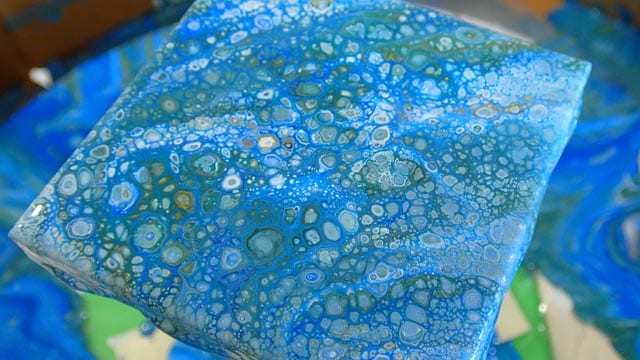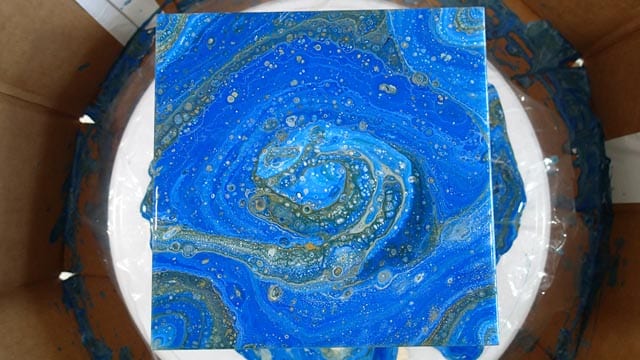I overestimated how much paint I needed yesterday for my first spinning record pour so I had about a third of a cup left over for trying out something else today. And when I had so much fun with the spinner on the last pour, why put it away!
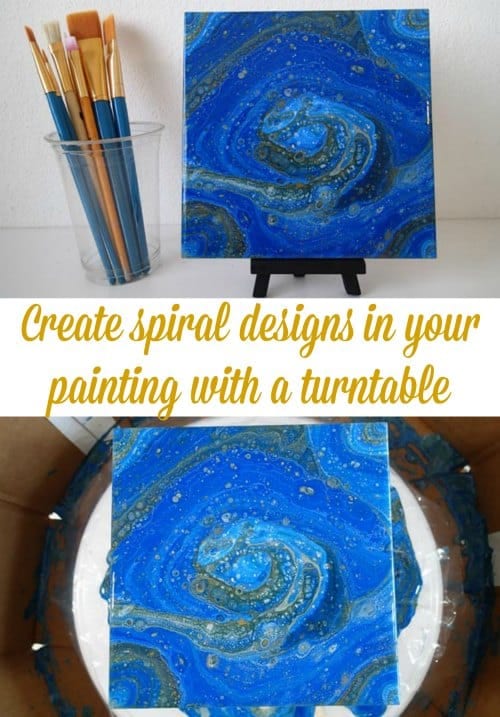
A smaller project today, pouring onto a 6 inch ceramic tile, to use up that leftover paint. I’ve covered the turntable in plastic which I’ve stuck down to the surface and then stuck the tile down on top of the plastic. I’m expecting paint to spin off everywhere but at least I should keep most of it off the spinner, and keep the tile somewhat fixed in the center.
I cover much of the surface pouring the paint while it spins and then just tip the whole thing to spread the paint out to the corners. There was enough paint to do that this time because I had poured it on fairly thickly and it hadn’t spun so much that the paint had thinned right out. In future, I might try respinning to see if I can spread the paint to cover the corners, although slowly tilting does give more design control.
Isn’t it interesting how the same cup can give different results? This tile has a much deeper blue color than the record did yesterday. The yellow is more mixed and less defined, but that maybe because the paint was left to sit in the cup longer before this tile was poured.
I also got a third project out of this cup so it was great value. I made a little matching mini 3 x 3 inch canvas too with what I still had left in the cup without having to mix anything else. So that was a 12 inch record, a 6 inch tile and a 3 inch canvas – sweet. You can see pictures of the mini in the slideshow.
Check out the slideshow below for more images, both wet and dry, and some closeups of the details.
After being told in high school that she was so bad at art that she should switch to another subject, Deby didn’t paint again for 35 years. Then a stroke released a new wave of creativity and she began exploring with dot painting, abstract and eventually acrylic pouring, and at last the joy of working with color returned. You don’t need ‘talent’ to be an acrylic pouring artist – just enthusiasm, some basic instruction, and a willingness to try, fail and try again. Paint along with her and learn from her many mistakes, and you’ll soon make great art together.

